How to Choose Vegan Protein Naturally for Optimal Health
Share
Did you know that over 50 percent of adults do not meet their daily protein needs? If you follow a vegan diet, getting enough protein takes careful planning and the right choices. Taking charge of your nutrition not only helps maintain muscle and energy, it can also protect long-term health. Discover how simple changes and everyday ingredients can make meeting your protein goals easy, delicious, and satisfying.
Table of Contents
- Step 1: Identify Your Daily Protein Needs
- Step 2: Select High-Quality Vegan Protein Sources
- Step 3: Evaluate Protein Completeness And Amino Acids
- Step 4: Compare Digestibility And Processing Methods
- Step 5: Verify Ingredient Quality And Clean Labels
- Step 6: Incorporate Chosen Protein Into Daily Meals
Quick Summary
| Key Point | Explanation |
|---|---|
| 1. Determine Your Daily Protein Needs | Calculate your daily protein by multiplying your weight in kg by 0.75 for general requirements. |
| 2. Choose High-Quality Vegan Proteins | Select diverse protein sources like legumes, nuts, and whole grains for optimal nutrition. |
| 3. Ensure Protein Completeness | Combine different plant proteins to achieve a full amino acid profile in your meals. |
| 4. Evaluate Protein Digestibility | Opt for minimally processed proteins and use preparation techniques to improve absorption. |
| 5. Read Ingredient Labels Carefully | Look for clear, minimal ingredient lists with recognizable components in protein products. |
Step 1: Identify Your Daily Protein Needs
Understanding your daily protein requirements is a foundational step in creating a balanced vegan nutrition plan that supports optimal health. According to West London NHS, adult protein needs vary based on body weight, with recommendations averaging around 0.75 grams of protein per kilogram of body weight. This translates to approximately 56 grams daily for men and 45 grams for women.
To calculate your personal protein needs, start by determining your body weight in kilograms. Multiply your weight by 0.75 to get your baseline daily protein requirement. For active individuals or those engaging in regular strength training, you might need slightly more protein to support muscle maintenance and recovery. Consider consulting a nutritionist who specialises in plant-based nutrition to get a personalised assessment tailored to your specific health goals and activity levels.
When tracking your protein intake, focus on incorporating diverse vegan protein sources throughout your meals. A balanced diet should include a variety of plant proteins like legumes, nuts, seeds, and whole grains to ensure you receive a complete amino acid profile. Remember that protein absorption and utilisation can vary between different plant sources, so variety is key to meeting your nutritional needs effectively.
Step 2: Select High-Quality Vegan Protein Sources
Choosing high-quality vegan protein sources is crucial for maintaining optimal nutrition and supporting your health goals. According to NHS, good protein sources for vegans include beans, pulses, and other plant-based proteins that can provide essential amino acids and nutrients your body needs.
To select the best vegan protein sources, focus on diverse and complete protein options. Start with legumes like lentils, chickpeas, and black beans, which offer substantial protein content. Incorporate nuts and seeds such as almonds, chia seeds, and hemp seeds for additional protein variety. Whole grains like quinoa and amaranth are also excellent protein sources that provide a complete amino acid profile. When exploring plant-based protein options, consider protein powders made from pea, hemp, or brown rice protein for convenient supplementation.
Remember that protein quality matters as much as quantity. Aim to combine different protein sources throughout your meals to ensure you receive a comprehensive range of amino acids. Experiment with meal combinations like bean and grain dishes, tofu stir fries, and smoothies featuring multiple protein rich ingredients. By diversifying your protein intake, you can create delicious and nutritionally balanced meals that support your overall wellness.

Step 3: Evaluate Protein Completeness and Amino Acids
Understanding protein completeness is essential for vegans to ensure optimal nutrition. According to NHS, with good planning and understanding, you can create a balanced diet that provides all the nutrients your body requires. Protein completeness refers to whether a protein source contains all nine essential amino acids that your body cannot produce independently.
To evaluate protein completeness, focus on combining different plant protein sources that complement each other. Some proteins are considered complete, like quinoa and soy, while others may lack specific amino acids. When exploring protein powder options, look for blends that combine multiple plant sources to create a full amino acid profile. For instance, pairing rice protein with pea protein can provide a more comprehensive nutritional spectrum.
A practical approach to ensuring amino acid diversity is to consume a variety of protein sources throughout your day. Mix legumes with whole grains, incorporate nuts and seeds, and experiment with plant-based protein powders. This strategy not only ensures you receive all essential amino acids but also adds delicious variety to your meals. By thoughtfully combining different protein sources, you can create nutritionally rich meals that support your body’s protein and amino acid requirements.
Step 4: Compare Digestibility and Processing Methods
Understanding protein digestibility and processing methods is crucial for selecting high-quality vegan protein sources. NHS emphasises that a balanced vegan diet requires thoughtful planning to ensure optimal nutritional intake. Digestibility refers to how efficiently your body can break down and absorb protein nutrients from different plant sources.
When comparing protein digestibility, consider the processing methods that impact nutrient availability. Raw and minimally processed proteins often retain more nutrients, while heavily processed protein powders might lose some nutritional value. When exploring plant-based protein powders, look for options that use gentle extraction methods like cold pressing or water extraction. These techniques help preserve the protein’s natural amino acid profile and reduce potential digestive challenges.
To optimise protein digestibility, pay attention to preparation methods and potential digestive aids. Soaking legumes, sprouting seeds, and using fermentation techniques can improve protein breakdown and nutrient absorption. Combine your protein sources with digestive enzymes or probiotics to enhance absorption. By understanding these nuanced aspects of protein processing, you can make more informed choices that support your body’s nutritional needs and digestive health.
![]()
Step 5: Verify Ingredient Quality and Clean Labels
Evaluating ingredient quality and understanding clean labels are critical steps in selecting vegan protein sources that support your nutritional goals. According to NHS, you can obtain necessary nutrients from a varied and balanced vegan diet that includes fortified foods and supplements. This means being discerning about the ingredients you choose and understanding what goes into your protein sources.
When examining protein product labels, look for minimal ingredient lists with recognisable whole food components. When exploring vegan protein options, prioritise products with transparent sourcing and fewer artificial additives. Key red flags include long lists of unpronounceable ingredients, excessive added sugars, and unnecessary fillers. Pay special attention to protein powders that list their protein sources clearly and provide information about their processing methods.
To become a savvy label reader, develop a quick scanning technique. Check for organic certifications, third-party testing information, and clear nutritional breakdowns. Consider contacting manufacturers directly if you have questions about their ingredient sourcing or processing methods. By taking a proactive approach to understanding ingredient quality, you can make informed choices that align with your health and nutritional objectives.
Step 6: Incorporate Chosen Protein into Daily Meals
NHS recommends basing meals on starchy carbohydrates and eating at least 5 portions of fruits and vegetables daily. This guidance becomes particularly important when strategically incorporating vegan protein sources into your everyday diet. The key is creating balanced meals that provide sustained nutrition and energy throughout the day.
Start by integrating protein sources into every meal strategically. For breakfast, blend plant protein powders into smoothies, sprinkle nuts and seeds over porridge, or prepare tofu scrambles. Lunch and dinner can feature protein rich legumes like lentils, chickpeas, and beans as primary ingredients. When exploring vegan meal options, focus on creating diverse plates that combine multiple protein sources with whole grains and vegetables.
To maintain variety and prevent protein fatigue, rotate your protein sources weekly. Experiment with different preparation methods like roasting, steaming, and blending to keep meals interesting. Consider meal prepping protein rich components in advance to simplify your cooking process. By approaching protein incorporation as a creative culinary adventure, you can ensure your vegan diet remains nutritionally complete, delicious, and enjoyable.
Choose Vegan Protein That Nourishes Your Body and Mind
Struggling to find vegan protein sources that truly support your health can feel overwhelming. The challenge lies in selecting natural, high-quality proteins that meet your daily needs and deliver all essential amino acids without compromise. This article highlights the importance of protein completeness, digestibility, and ingredient quality — key factors that Granavitalis understands deeply. Our carefully curated Vegan Protein Powders – Granavitalis are crafted to meet these demands, offering pure, nutrient-rich options that fit seamlessly into your balanced lifestyle.

Take control of your nutrition with thoughtfully selected ancestral grains and top-tier plant proteins. Visit Granavitalis today to explore our full range of Protein Power Packs – Granavitalis designed to energise your mornings and optimise your wellbeing naturally. Don’t settle for less than clean, wholesome food that nourishes your body and fuels your day. Your journey towards optimal vegan protein starts here.
Frequently Asked Questions
How can I calculate my daily protein needs as a vegan?
To calculate your daily protein needs, first determine your body weight in kilograms and multiply it by 0.75. This will give you a baseline of how much protein you should aim for each day, such as approximately 56 grams for men or 45 grams for women.
What are some high-quality vegan protein sources I should include in my diet?
Focus on incorporating legumes like lentils and chickpeas, as well as nuts, seeds, and whole grains like quinoa. Aim to include a variety of these sources throughout your meals for a complete amino acid profile.
How can I ensure I’m getting all essential amino acids in my vegan diet?
Combine different plant protein sources throughout the day, such as pairing rice with beans or incorporating quinoa. This strategy helps create a complete amino acid profile, ensuring you receive all essential nutrients.
What are effective ways to improve the digestibility of plant-based proteins?
To enhance protein digestibility, choose minimally processed options and consider preparation methods like soaking legumes or sprouting seeds. These actions can improve nutrient absorption and make it easier for your body to utilize the protein.
How can I evaluate the quality of vegan protein products?
Check the ingredient list for minimal and recognizable components, avoiding products with long lists of additives or sugars. Focus on items that clearly state their protein sources and consider contacting manufacturers if you have questions about their sourcing methods.
What are some tips for incorporating vegan protein into my daily meals?
Begin by adding protein-rich foods to every meal, such as using plant protein powders in smoothies or including beans in salads. Rotate your protein sources weekly to maintain variety and keep meals interesting.
